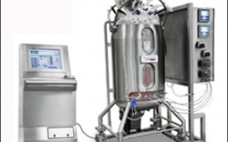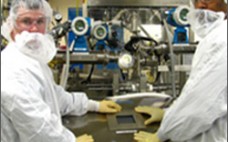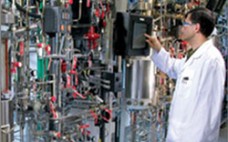In early April, I chatted with the chair of ESACT, Florian Wurm, a professor of biotechnology in the faculty of life sciences of école Polytechnique Fédérale de Lausanne in Switzerland. As chairman of ESACT, what are your duties? How is the chairperson selected, and how long does he or she serve? How long have you been chair? The ESACT chair is elected from among the members of the executive committee, which are elected by the membership. The executive committee organizes…
Friday, May 1, 2009 Daily Archives
FDA 21 CFR Part 11 Revisited
Six years after the US FDA applied a narrower scope to its interpretation of 21 CFR Part 11 on electronic records and signatures (1), the agency is ready to release the revised Part 11. The 2008 release of a draft revision of Annex 11 — Europe’s version of Part 11 (2) — put pressure on the FDA to complete its long-overdue Part 11 revision. As I made clear to members of my SmarterCompliance executive advisory group in May of last…
European Society for Animal Cell Technology 2009 Conference in Dublin, Ireland
It is a great pleasure for me to express an invitation and welcome message to you for the 21st ESACT Conference in Dublin, Ireland, here in the pages of BioProcess International, one of the most prestigious journals of its kind, “covering the whole development process for the global biotechnology industry.” Ireland is famous for her warmth of heart and poetic spirit, sometimes even brought into conjunction with Irish spirits — uisce beatha, “the water of life” — which…
FlexFactory from Xcellerex – A Proven Biomanufacturing Platform Enabled by Disposables
FlexFactory from Xcellerex is a biomanufacturing platform that is transforming the way the biotechnology industry approaches drug production. Built almost exclusively around disposables technology, each unit operation within the FlexFactory is self-contained in its own controlled environment module (CEM), effectively shrinking the cleanroom around each operation.
In this on-demand webcast, Parrish Galliher, Founder & Chief Technical Officer of Xcellerex, demonstrates how the FlexFactory eliminates the need for expensive clean-room facilities and CIP/SIP infrastructure, resulting in:
• Reduction in Capital Investment by 50% or More
• 70% Reduction in Start-up Time
• 55% Reduction of Carbon Footprint
• Major reduction of Water Consumption
• Increased Flexibility
FlexFactory is the only biomanufacturing platform that delivers the speed and capital efficiency of the CMO approach with the control and long-term economics of company-controlled manufacturing. View this webcast to gain an in-depth understanding of the benefits of this innovative technology.
Development of a High-Capacity MAb Capture Step Based on Cation-Exchange Chromatography
With new advances in expression vectors, the bioprocessing industry has seen a significant increase in antibody expression levels. To meet the demands of these increased titers, protein A chromatography columns need to be further scaled up in size and/or run in multiple cycles — with a consequent increase in buffer consumption, preparation, and storage. One way to address this problem is to develop other capture steps with high-capacity resins that can replace the protein A step.
This article outlines the methods and materials used to develop a high-capacity capture step using cation-exchange (CEX) chromatography to replace the existing protein A chromatography – making it possible to use existing chromatography hardware and eliminate increases in the buffer volume and holding tank size at existing manufacturing plants. Download the full article as a PDF below.
Follow-on Biologics
This webcast will describe the key steps in developing a CHO culture process for manufacturing a follow-on biologic. Analytical characterization of 14 lots of the commercial product provided information about the range in key product quality attributes of the marketed drug. The scientists at SP-Diosynth have developed a process that yields a product that is analytically comparable to the commercially available molecule. Product quality attributes investigated were aggregation, acidic and basic variants, galactose, sialic acid and fucose content, and complement dependent cytotoxicity activity.
Scalability of the process was demonstrated in 100L stainless steel bioreactors and a 50L single use bioreactor (SUB). The webcast shows SP-Dionsyth’s data indicated that the process generates high titer at scale consistently while achieving product quality similar to the commercial material.
With this on-demand webcast, you will gain valuable insight into aspects of SP-Disoyth’s process development, such as:
• Cell Line Characteristics
• Scalability
• Manufacturability
• Comparability
• Commercializability
The webcast features Sigma S. Mostafa, Ph.D.
Microbial Expression Technology: The New Standard For Protein Expression – Addressing Speed, Quality and Cost of Goods
A new paradigm of microbial strain development has been achieved that overcomes today’s slow, iterative and error-prone process through the use of a novel, streamlined, high throughput platform. The P. fluorescens expression platform, Pfēnex Expression Technology™, reliably delivers host strains expressing large amounts of high quality target protein within very short development times. In this webcast, Dr. Charles H. Squires, Head of Discovery R&D at Pfēnex Inc., discusses:
• An Overview of Pfēnex Expression Technology™
• How Pfēnex Inc. Practices the Technology
• Case Studies Highlighting the Power of the Technology
• Product Areas
• Further Uses of Pfēnex Expression Technology™in Development
Join Dr. Squires as he illustrates how the combination of technologies available through the Pfēnex Expression Technology™system make it the most complete, flexible and productive bacterial strain development and biopharmaceutical production platform available today.




